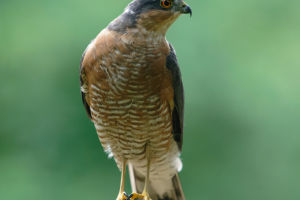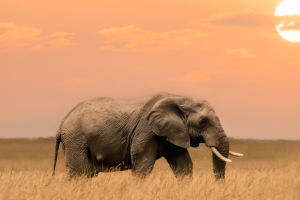Giraffes, the tallest land animals on Earth, are instantly recognizable for their towering necks, which can stretch up to six feet long.
While their height makes them one of nature's most extraordinary creatures, many Lykkers may wonder: why do giraffes have long necks instead of long legs or tongues?
Let’s explore this unique adaptation and some other fascinating facts about these magnificent animals.
The Purpose of Long Necks
The giraffe's long neck is a product of millions of years of evolution, and it serves several essential purposes. The most widely accepted theory among scientists is that giraffes evolved their long necks to reach higher foliage in the treetops, primarily from acacia trees, that other herbivores could not access. This advantage gave giraffes access to a food source with little competition, allowing them to thrive in Africa’s vast savannas.
However, feeding isn’t the only reason for their necks. Giraffes, particularly males, use their long necks in a behavior known as "necking," where they swing their necks and heads like hammers to battle other males for dominance or mating rights. The giraffe with the stronger neck and head-butting ability often wins, securing the chance to mate and pass on their genes.
Long Legs vs. Long Necks
One might ask why giraffes developed long necks instead of long legs to reach their high food sources. While giraffes do have exceptionally long legs (their legs alone can measure around six feet), the combination of long legs and a long neck helps maintain balance and agility. Long necks also allow them to spot predators from a distance across the savanna. Having longer legs without a proportionate neck would make it difficult for giraffes to bend down and drink water, which they already struggle with due to their height.
Why Not Long Tongues?
Though giraffes’ necks are the stars of the show, their tongues are also quite impressive. A giraffe’s tongue can reach up to 18-20 inches long and is prehensile, allowing them to grasp and pull leaves from trees with remarkable precision. Their tongues are also dark in color, which scientists believe protects them from sunburn as they spend long hours feeding. However, the tongue alone would not be sufficient to access the highest foliage, so the neck evolved to ensure they could feed efficiently.
Why do Giraffes have Long Neck? | Science Curiosity | Letstute
Video by Let'stute
Fun Facts About Giraffes
1. Silent Giants: Giraffes are generally quiet animals. For a long time, they were thought to be completely mute, but research has shown they do communicate using low-frequency sounds that are often inaudible to humans.
2. Sleep Standing Up: Giraffes sleep standing up, and they do so for only short bursts of time, around five to 30 minutes, to stay vigilant for predators.
3. Spot Patterns: Each giraffe's coat is unique, much like human fingerprints. Their spots also help with thermoregulation, as blood vessels underneath the spots release heat.
4. Long Tongue Color: Giraffes have dark blue or purple tongues, which help prevent sunburn while they feed in the hot African sun
Pet-Friendly Travel and Events for Animal Lovers
For Lykkers looking to connect with animals and enjoy pet-friendly experiences, there are numerous zoos and wildlife parks that allow for safe, responsible giraffe interactions. Many facilities offer feeding programs where visitors can hand-feed giraffes, giving them an up-close experience with these gentle giants.
Additionally, animal lovers can attend pet-friendly events, such as the Pet Expo USA or regional wildlife conservation events that often feature educational talks and interactive activities for families. These events provide valuable opportunities to learn about giraffes and other animals while supporting conservation efforts.
Choosing the Right Pet Coat and Food
For Lykkers with pets, making the right choices for their furry friends is crucial. When it comes to selecting a coat for your pet, consider the climate and your pet's comfort. Look for breathable fabrics in warmer months and insulated coats in cooler months. Pet coats range in price from USD 20 to 100, depending on the material and design.
For pet food, always choose high-quality brands that provide balanced nutrition. Prices for premium pet food can range from USD 30 to 70 per bag. Be sure to read the ingredients and consult with a veterinarian to ensure your pet gets the proper nutrients for their breed, size, and health needs.
Final Perspective
Giraffes' long necks are a unique evolutionary adaptation that has helped them survive and thrive in their natural habitat. Whether it’s for feeding on treetop leaves or battling for dominance, giraffes' necks have given them a distinct advantage. For Lykkers who are passionate about animals, there are countless opportunities to learn more and engage in responsible wildlife tourism. From visiting giraffes in conservation parks to attending pet-friendly events, there's always something new to discover about our fascinating animal kingdom.


